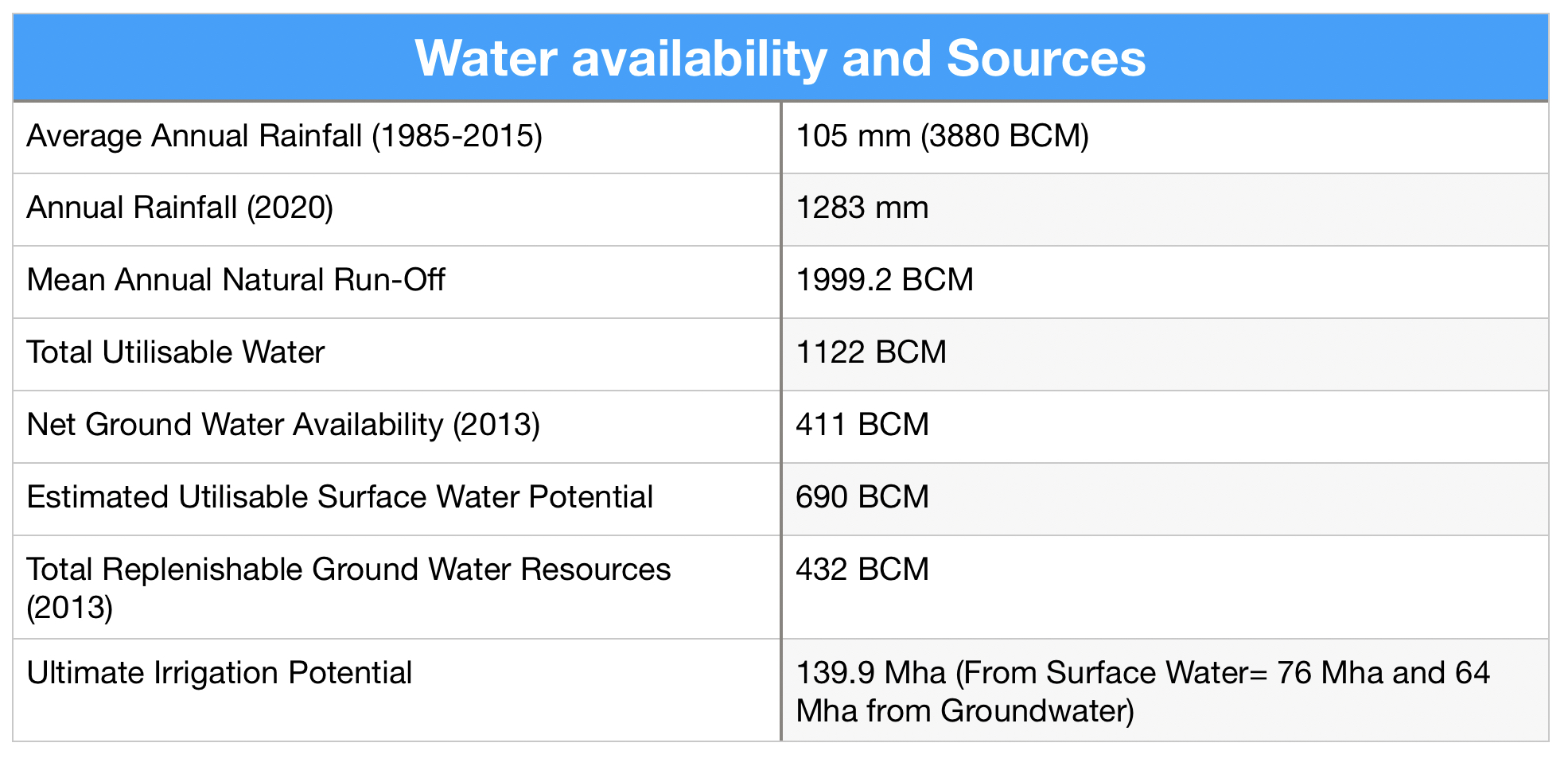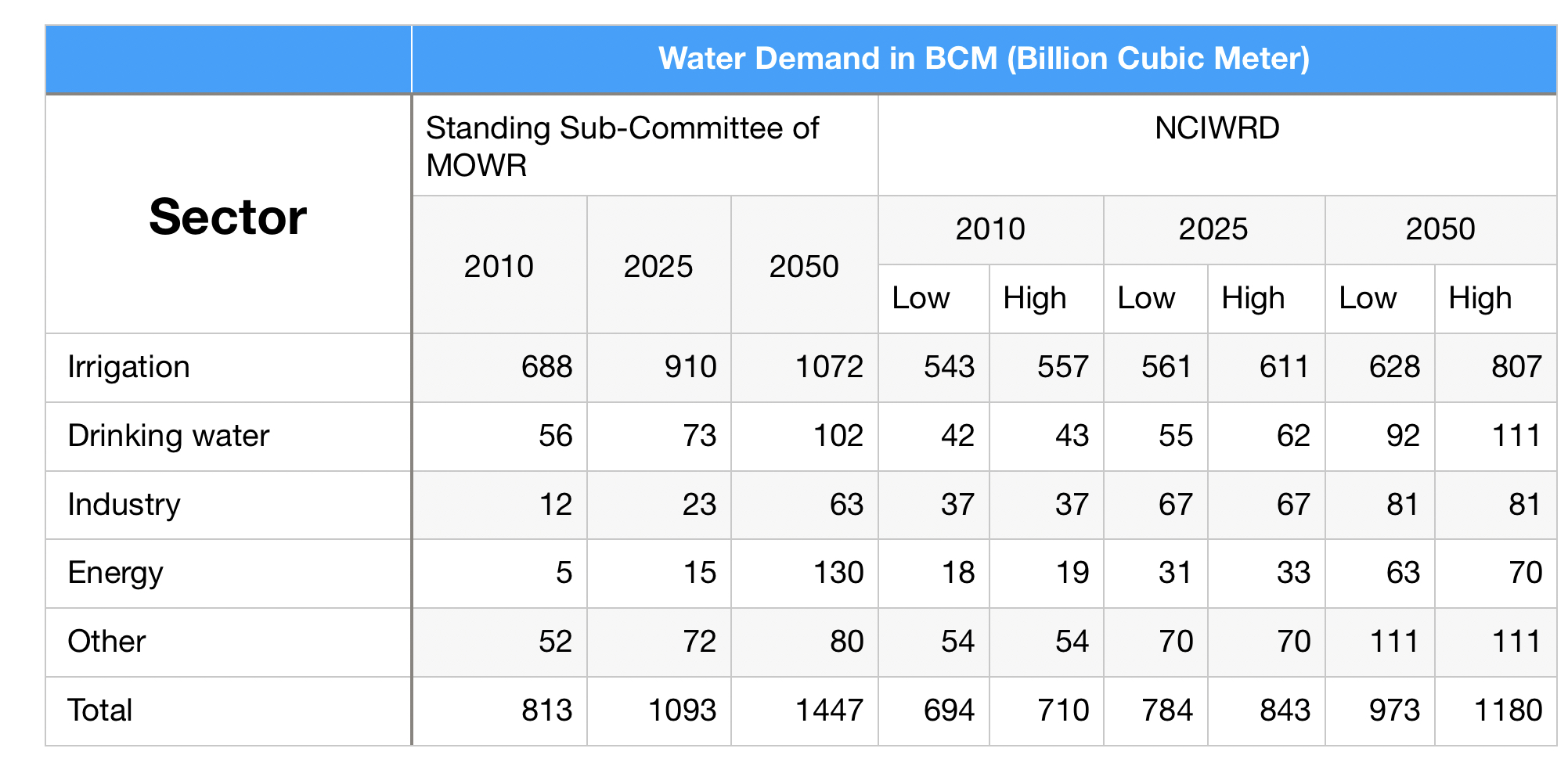ForumIAS announcing GS Foundation Program for UPSC CSE 2025-26 from 19 April. Click Here for more information.
Contents
| For 7PM Editorial Archives click HERE → |
Introduction
Water management for food security is a pressing global concern, particularly in areas like India, where agriculture plays a vital role. The agricultural sector is the biggest consumer of water globally, accounting for about 70% of all surface and groundwater withdrawals. India, in particular, uses 80-90% of the total water for agriculture. However, the looming threat of climate change, coupled with a booming population and shifting land-use patterns, has heightened concerns around water scarcity, necessitating urgent conservation measures.
Why Fostering Water Management for Food Security is Necessary?

Rising Demand for Food: With the world population expected to reach nearly 10 billion by 2050, there is an increased demand for food. Efficient water management ensures that this growing demand can be met without depleting our water resources.
Climate Change: Changing climatic patterns have resulted in water scarcity in certain areas and floods in others. Effective water management helps in building resilience against such adverse effects of climate change, thereby ensuring food security.
Depletion of Water Resources: Overexploitation of water resources, particularly for irrigation, has led to their rapid depletion. Fostering efficient water management practices can prevent further depletion and ensure the sustainability of these resources.
Uneven Distribution of Water Resources: Water resources are not evenly distributed across the globe, leading to areas of abundance and areas of scarcity. Efficient water management can help in the optimal utilization of these resources, ensuring food security in all regions.
Socio-economic Considerations: A large section of the global population is dependent on agriculture for their livelihood. Efficient water management not only ensures food security but also economic security for these individuals.
| Must read: [Kurukshetra April 2023 Summary] Groundwater Water Management through Panchayats – Explained, pointwise |
What initiatives has the Government of India taken to Fostering Water Management for Food Security?

Pradhan Mantri Krishi Sinchayee Yojana (PMKSY): Launched in 2015-16, PMKSY aims to provide irrigation facilities to every farm and improve water efficiency. It amalgamates multiple schemes such as Accelerated Irrigation Benefit Programme (AIBP), Integrated Watershed Management Programme (IWMP), and the On Farm Water Management (OFWM). The scheme has a budget of $93,068 crore for 2021-26 and is expected to benefit around 22 lakh farmers.
Per Drop More Crop (PDMC): A part of the PMKSY, this scheme was launched in 2015-16 with the goal of improving water use efficiency and productivity while reducing input costs. It promotes the use of Micro Irrigation technologies like drip and sprinkler irrigation systems. The Government also provides financial assistance or subsidy to small and marginal farmers at 55% of the indicative unit cost and at 45% to other farmers under the PDMC scheme.
Sahi Fasal Campaign: Initiated by the Ministry of Jal Shakti in 2019, this campaign is designed to educate farmers about efficient farming methods and crop selection to maximize water usage.
Bhartiya Prakratik Krishi Paddhati (BPKP): The Government promotes natural farming through this scheme. It aims to reduce cultivation costs, restore soil ecosystems, conserve resources, boost farmer incomes, and ensure environmental sustainability. It is estimated that natural farming requires 50-60% less water and electricity and reduces methane emissions.
| Must read: Natural Farming – process, advantages and challenges – Explained, pointwise |
What are some measures to mitigate the water footprints of crops?
Promote Efficient Irrigation Systems: Micro-irrigation systems, such as drip and sprinkler irrigation, are being promoted under the ‘Per Drop More Crop’ initiative. These systems deliver water directly to the plant roots, reducing evaporation and runoff, thus significantly reducing the water footprint.
Crop Diversification: The government is encouraging farmers to grow less water-intensive crops. Crop rotation and multi-cropping are also promoted as they can enhance soil fertility and reduce the water footprint.
Natural Farming Methods: Practices such as the Bhartiya Prakratik Krishi Paddhati (BPKP) promote natural farming, which requires 50-60% less water and electricity compared to conventional farming methods.
Promote Rainwater Harvesting: Rainwater harvesting is being encouraged at both the farm and community level to collect and store rainwater for later use. This can significantly reduce the demand for groundwater and thus the water footprint.
Increase educational programs: The Sahi Fasal campaign educates farmers about water-efficient farming methods and appropriate crop selection based on regional water availability. For instances, nutritious Millets such as Shree Anna Bajra and Shree Anna Jowar are encouraged for cultivation in water scarce regions of the country.
Use of Water-Efficient Goods: The Bureau of Water Use Efficiency (BWUE) has published Indian Standards for micro-irrigation products to promote water efficiency in agriculture.
Monitoring and Regulation: Regular monitoring of Water Use Efficiency (WUE) across all sectors helps to identify areas for improvement and devise effective strategies for reducing the water footprint. This will also help in achieving SDG target 6.4, which focuses on ‘substantially increase water- use efficiency across all sectors and ensure sustainable withdrawals and supply of freshwater to address water scarcity and substantially reduce the number of people suffering from water scarcity by 2030’.
Community Participation: The government encourages community participation in water conservation. Self-help groups and cooperatives disseminate techniques like rainwater harvesting, groundwater recharge, and the use of micro-irrigation technology to farmers.
| Must read: Water Management needs a Hydro Social Approach |
The imperative to foster water management for food security is clear, given the projected population growth, climate change implications, and increasing water stress. With agricultural practices consuming the majority of India’s water resources, promoting water-efficient farming techniques and technologies is key. Policymakers and scientists are actively working on bringing about a shift from intensive to resource-efficient, climate-smart farming, but much work remains to be done. Through collective efforts and the successful implementation of water conservation policies, it is possible to ensure food security and sustainable socio-economic growth.
Source: Kurukshetra
Syllabus: GS 1: Human and Economic Geography: Distribution of key natural resources across the world (including South Asia and the Indian sub-continent).




